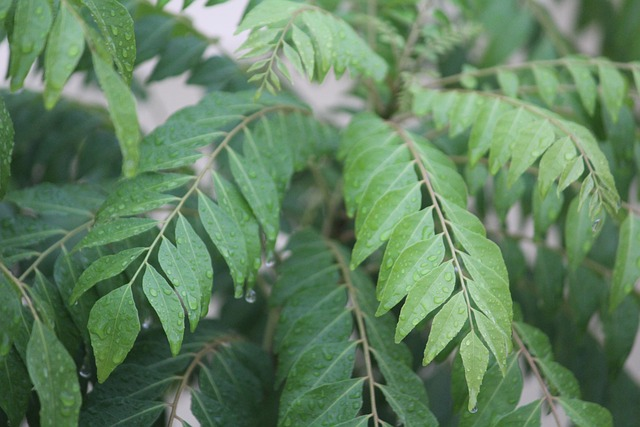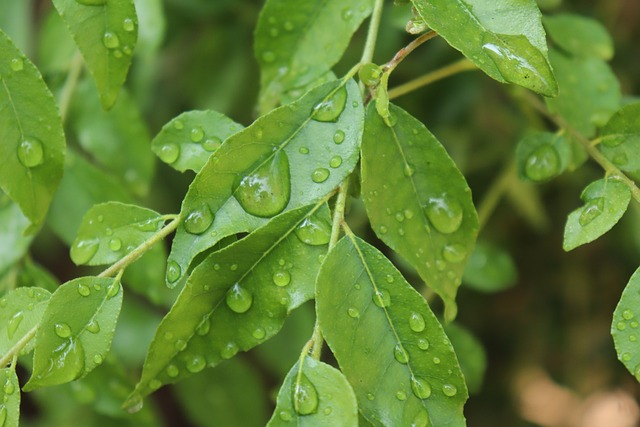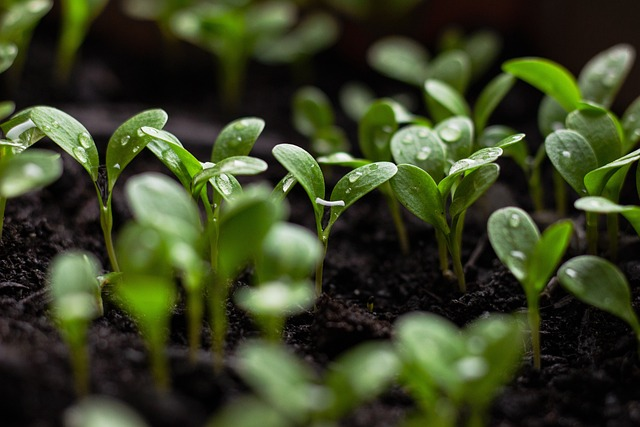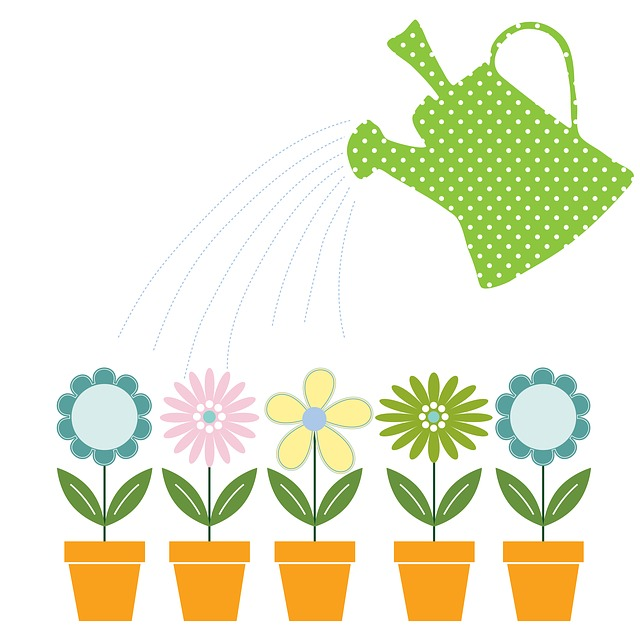Growing Curry Leaf plants can be an incredibly rewarding experience, especially for people who enjoy vibrant, green foliage and the tantalizing aroma of fresh curry leaves. However, the process requires attention to detail, from the planting stage to the ongoing care needed for a thriving plant.
In this blog post, we delve into the world of curry leaf plant care, focusing on the best fertilizer for curry leaf plants, essential nutrients, soil structure, pruning, and pest management. By the end of this post, you will have gained valuable insights to help your curry leaf plant grow and thrive naturally using the best fertilizer for curry leaf plants.
Short Summary
- Optimize curry leaf plant growth with nitrogen-rich, organic and homemade fertilizers.
- Provide essential nutrients such as chelated iron, Epsom salt and gypsum for optimal health.
- Ensure proper care of your curry leaf plants through pruning, pest management & planting techniques.
Optimal Fertilizers for Curry Leaf Plant Growth

Choosing the right fertilizers is crucial for the optimal growth and health of your curry leaf plant. Nitrogen-rich fertilizers, organic and homemade fertilizers, and both liquid and solid fertilizers can all contribute to better growth and a healthier plant.
Nitrogen-Rich Fertilizers
Nitrogen-rich fertilizers provide numerous benefits for curry leaf plants, as nitrogen is essential for plant growth and development. Utilizing nitrogen-rich fertilizers can lead to more vigorous growth, promoting the overall health of the plant. Some examples of nitrogen-rich fertilizers include blood meal, fish emulsion, and cow manure.
When applying blood meal or cow manure, it is important to follow the recommended application methods to ensure the best results. For example, when applying blood meal, gently mix the top layer of soil after adding the blood meal, taking care not to damage the roots, and then water the soil thoroughly.
Similarly, when applying cow manure, mix it gently into the top layer of soil and water thoroughly.
Organic and Homemade Fertilizers
Organic and homemade fertilizers offer many benefits for curry leaf plants. These fertilizers provide essential nutrients while being environmentally friendly and cost-effective. Some examples of organic and homemade fertilizers include eggshells, rice water, and Epsom salt.
Using eggshells as fertilizer can provide calcium, magnesium, potassium, and iron, which are all essential for plant growth. To use eggshells, simply crush them and sprinkle them on the surface of the soil, mixing the top layer gently and applying every 2 to 3 weeks.
Rice water, on the other hand, is believed to contain Vitamin B, which can stimulate new root growth. Epsom salt, a common source of magnesium for plants, can be dissolved in water and applied at the base of the plant or as a foliar spray monthly until early fall.
Liquid vs. Solid Fertilizers
Both liquid and solid fertilizers can provide benefits for curry leaf plants. Liquid fertilizers offer a quick supply of nutrients, allowing plants to absorb them directly through the leaves, making them highly efficient.
Solid fertilizers, on the other hand, provide long-term nourishment and can be applied less frequently. The choice between liquid and solid fertilizers depends on your plant’s needs and your personal preferences. Using a combination of both types of fertilizers can ensure your curry leaf plant receives the necessary nutrients for optimal growth.
Essential Nutrients for Curry Leaf Plant Health

In addition to the right fertilizers, ensuring that your curry leaf plant receives the essential nutrients Iron (Chelated Iron), Magnesium (Epsom Salt), and Calcium (Gypsum) is crucial for its overall health. These nutrients play a vital role in various plant processes, such as chlorophyll formation, protein and enzyme formation, and cell wall formation.
These processes are essential for the plant’s growth and development, and without them, the plant will not be able to thrive. It is important to make sure that the soil is well-drained and that the plant is receiving the right amount of sunlight and water. Additionally, regular pruning and trimming of the plant is necessary.
Iron: Chelated Iron
Iron is essential for the formation of chlorophyll, which is necessary for photosynthesis. Chelated iron is a type of iron supplement that consists of iron bound to an organic molecule, increasing its availability for plant absorption. To apply chelated iron to your curry leaf plant, you can use soil saturation or foliar spray methods, applying every three months or every two months until early fall.
By providing your curry plants with chelated iron, you can enhance its overall health and ensure that it receives the essential nutrients it needs to grow and thrive.
Magnesium: Epsom Salt
Magnesium is important for the formation of proteins and enzymes, which are vital for plant growth. Epsom salt is a common source of magnesium for plants and can help restore the green color of the leaves.
Dissolve 2 tablespoons of Epsom salt in 1 gallon of water. This solution can be used to apply it at the base of the plant or as a foliar spray directly onto the leaves of your curry leaf plant. Regular application of Epsom salt will ensure that your curry leaf plant receives the necessary magnesium for its growth and overall health.
Calcium: Gypsum
Calcium is essential for the formation of cell walls and aids in the absorption of other nutrients. Gypsum is a mineral that can provide calcium for your curry leaf plant. To apply gypsum to your plant, spread it atop the potting soil in the pot, gently mix the top layer of soil, and water the plant thoroughly. Applying gypsum every other month will ensure that your curry leaf plant receives the necessary calcium for its growth and overall health.
By providing your curry leaf plant with the essential nutrients, Iron, Magnesium, and Calcium, you can help it grow and thrive naturally.
Soil Structure and Potting Soil for Curry Leaf Plants

The right soil structure and potting soil are crucial for the health and growth of your curry leaf plant. Improving soil structure with organic matter and choosing the right potting soil can greatly affect the overall well-being of your curry leaf plant.
Curry leaf plants require well-drained and slightly acidic soil for optimal growth. Incorporating compost, cow manure, and river sand can help create the perfect soil environment for your plant.
Improving Soil Structure with Organic Matter
Incorporating organic matter into your curry leaf plant’s soil can greatly enhance its soil structure. Organic matter such as compost or animal manure can increase soil porosity, water-holding capacity, and nutrient availability, making it an ideal environment for curry leaf plants. Using cow manure in your plant’s soil can help improve soil structure and texture, as well as aid in water retention.
By improving soil structure with organic matter, you can create an ideal environment for your curry leaf plant to grow and thrive.
Choosing the Right Potting Soil
Selecting the appropriate potting soil is essential for the cultivation of your curry leaf plants. The plant prefers slightly acidic, loose, and well-drained soil. A combination of soil, sand, and organic matter, such as compost or animal manure, can be used to create the perfect potting soil for your plant.
By choosing the right potting soil, you can ensure that your curry leaf plant has the proper environment to grow and thrive naturally.
Curry Leaf Plant Care Tips

Taking care of your curry leaf plant is essential for its health and growth. Pruning and maintenance, as well as pest and disease management, are important aspects of curry leaf plant care. Ensuring your plant receives the proper care can lead to a healthier, more vibrant plant that produces an abundance of fresh curry leaves.
Curry Leaf Plant Pruning and Maintenance
Regular pruning and maintenance of your curry leaf plant can promote healthier growth and prevent issues such as fungal infections or pest infestations. Pruning allows for better air circulation within the plant, helps remove dead stems and leaves, and prevents branches from rubbing against each other and causing damage. The optimal time for pruning is during the spring season.
By ensuring your curry leaf plant is properly pruned and maintained, you can promote healthier growth and prevent potential issues. Check out our article on how to prune your curry leaf plant.
Pest and Disease Management
Pest and disease management is crucial for maintaining the health of your curry leaf plant. Some pests and diseases that can affect curry leaf plants include aphids, scales, citrus mealybugs, and psyllids. To control pests and diseases, you can use neem oil or horticultural oil regularly, as well as sprinkle salt water on the leaves once every two weeks.
By implementing pest and disease management techniques, you can ensure the health and longevity of your curry leaf plant.
Planting and Propagation Techniques for Curry Leaf Plants
To grow more curry leaf plants, you can utilize various planting and propagation techniques, such as seed sowing, stem cuttings, and air layering. Each method has its own unique advantages and can lead to successful growth and propagation of curry leaf plants.
Seed sowing involves planting the seeds directly in the soil or in a pot and ensuring the soil remains moist with adequate sunlight. Stem cuttings involve taking a cutting from a healthy plant, removing the lower leaves, and planting it in a pot with moist soil.
Air layering is a method where a stem is rooted while still connected to the parent plant, making a cut in the stem and wrapping it with damp sphagnum moss.
By using the appropriate planting and propagation techniques, you can grow more curry leaf plants and enjoy their vibrant, aromatic foliage.
Optimally Fertilizing Your Curry Leaf Plant
Growing and maintaining a healthy curry leaf plant requires attention to detail and dedication to providing the best possible care. By choosing the right fertilizers, ensuring essential nutrients are supplied, improving soil structure, and practicing proper pruning and pest management, you can help your curry leaf plant thrive naturally.
With the knowledge and techniques shared in this blog post, you are now equipped to cultivate a flourishing curry leaf plant and enjoy its vibrant, green foliage and aromatic curry leaves.
Frequently Asked Questions
How can I make my curry leaves grow faster at home?
If you want to make your curry leaves grow faster, try pruning them regularly and applying liquid fertilizer every three to four weeks. Additionally, adding a teaspoon of Epsom salt dissolved in one liter of water every three months can help speed up growth. This will ensure your curry leaves get enough nutrients for healthy and fast-growing foliage.
How do you grow a healthy curry leaf plant?
To grow a healthy Curry Leaf plant, provide it with well-drained soil that has an acidic pH, full sun or shade during the heat of the day in hot regions, moderate watering, and fertilize as needed throughout the year.Keep temperatures above 40°F and avoid oversaturating the soil during the winter resting period.
What is the best soil mixture for curry leaf plant?
For the best results, a well-draining soil mix of cow dung, organic compost, and river sand is recommended for curry leaf plants. This mixture should be used in February to March when sowing, and it takes about 1-2 years of regular growth for the plant to develop healthy and aromatic leaves.
Is tea powder good for curry leaf plant?
It looks like tea powder can be beneficial for a curry leaf plant, as many people recommend using it to help the plant flourish. Tea leaves and coffee grinds are two other popular options for giving the plant an extra boost. Taking care of your plant with these helpful suggestions can ensure it remains healthy and vibrant.
Which fertilizer is best for curry leaves?
Based on popular advice, homemade fertilizers such as buttermilk, rice water, asafoetida, wood ash, banana peel and eggshells appear to be the best fertilizer for Curry Leaf plants. Therefore, applying these natural fertilizers weekly can have positive effects on your Curry Leaf plant’s growth.

David, the founder of The Garden Fixer, started with a passion for gardening in 2012. He has continued his passion for gardening and desire to improve his skills and wanted to share his journey and helpful knowledge with other like-minded individuals.
He launched The Garden Fixer as an outlet for those interested in learning more about Gardening in hopes they can take what they learn and apply it for themselves!
